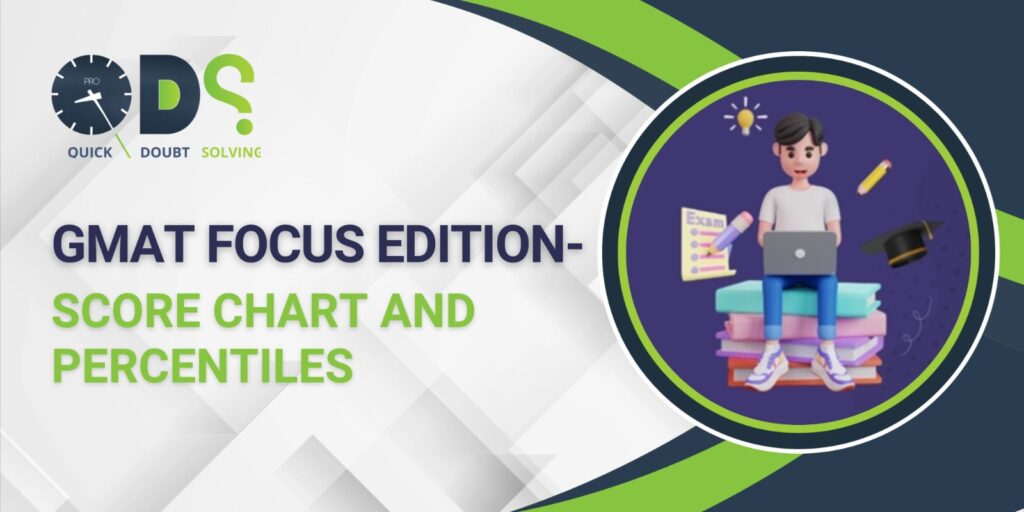The Graduate Management Admission Test (GMAT) has recently introduced the new GMAT Focus Edition, a groundbreaking approach to evaluating candidates for business schools. Along with this edition come a new scoring system and percentile rankings, providing a fairer and more comprehensive assessment of applicants’ abilities. In this article, we will explore the key features of the GMAT Focus Edition score scale, discuss the significance of percentile rankings, and investigate how these percentiles are calculated.
A New Scoring System for GMAT Focus Edition
The GMAT Focus Edition brings a significant change to the scoring scale compared to the previous version of the GMAT exam. The Total Score of the GMAT Focus Edition now ranges from 205 to 805, with each score ending in 5. This adjustment aims to differentiate the GMAT Focus Edition from the GMAT Exam and ensure clarity for candidates and schools.
In addition to the change in the Total Score range, the GMAT Focus Edition’s scoring system now incorporates all three sections: Quantitative, Verbal, and Data Insights. Each team is equally weighted towards the Total Score, and section scores range from 60 to 90. This refinement allows for a more comprehensive assessment of candidates’ abilities and focuses on data literacy, critical thinking, and problem-solving skills.
Understanding Percentile Rankings
Percentile rankings are crucial in understanding how a candidate’s performance compares to other test-takers. A percentile ranking represents the percentage of test-takers that a candidate has performed better than. For example, a percentile ranking of 75% indicates that the candidate has outperformed 75% of other test-takers.
It is important to note that percentile rankings provide a more meaningful performance comparison than direct score comparisons. Due to the changes in the scoring scale and distribution, it is impossible to directly compare scores from the previous version of the GMAT Exam to the GMAT Focus Edition. Therefore, percentile rankings become even more critical in evaluating candidate competitiveness.
Calculation of GMAT Focus Edition Percentiles
GMAC calculated the GMAT Focus Edition percentiles using data from 5 years, from July 2017 to June 2022, including a sample size of 866,664 tests. Although the data is not specific to the GMAT Focus Edition, it provides valuable insights into how test-takers perform on similar question types found in the Focus Edition.
However, it is essential to acknowledge that the initial percentiles are not based on actual Focus Edition scores. These percentiles are an estimation based on the available data. As more data from actual GMAT Focus Edition exams becomes available, GMAC will refine the percentiles to reflect the performance of candidates more accurately.
The Impact of GMAT Focus Edition Percentiles
The GMAT Focus Edition percentiles serve as a guide for candidates and business schools to understand the competitiveness of a candidate’s scores. With the introduction of the GMAT Focus Edition, admissions committees may receive a mix of scores from both the standard GMAT and the Focus Edition. In such cases, percentile rankings become a crucial factor in comparing candidates’ performances across different tests.
It is worth noting that the introduction of the GMAT Focus Edition brings changes beyond the scoring scale and percentiles. The shorter testing time, the Question Review & Edit feature, and the increased emphasis on the Data Insights section may all impact test-taker performance. These factors could influence how percentiles evolve as more candidates take the GMAT Focus Edition.
GMAT Focus Edition Score Chart:
Total Score Percentiles
The table below shows the current GMAT Focus Edition Total Score percentiles:
| Total Score | Percentile Ranking |
| 205 | 0% |
| 325 | 25% |
| 475 | 50% |
| 605 | 75% |
| 805 | 100% |
GMAT Focus Edition Score Chart:
Section Score Percentiles
In addition to the Total Score, the GMAT Focus Edition also provides percentiles for each section score:
Quantitative, Verbal, and Data Insights. Let’s examine the section score percentiles in the tables below:
Quantitative Section
| Quantitative Score | Percentile Ranking |
| 60 | 0% |
| 75 | 25% |
| 80 | 50% |
| 85 | 75% |
| 90 | 100% |
Verbal Section
| Verbal Score | Percentile Ranking |
| 60 | 0% |
| 75 | 25% |
| 80 | 50% |
| 85 | 75% |
| 90 | 100% |
Data Insights Section
| Data Insights Score | Percentile Ranking |
| 60 | 0% |
| 75 | 25% |
| 80 | 50% |
| 85 | 75% |
| 90 | 100% |
Factors Influencing GMAT Focus Edition Percentiles
As mentioned earlier, several factors may influence the GMAT Focus Edition percentiles. Let’s explore these factors in more detail:
Shorter Testing Time
The GMAT Focus Edition has a shorter testing time than the current GMAT. This change could impact test-taker performance. With a shorter duration, test-takers may feel more mentally alert throughout the exam, potentially leading to improved scores. However, it is essential to note that shorter testing time does not necessarily imply more straightforward content. The difficulty level of the exam remains the same, and success still relies on thorough preparation.
Increased Emphasis on Data Insights
The GMAT Focus Edition emphasizes the Data Insights section, which is now equally weighted with the Quantitative and Verbal sections. This change reflects the growing importance of data literacy and analytical skills in the business world. Test-takers who dedicate more time and effort to mastering the Data Insights section may see improvements in their scores. The increased preparation in this section could impact the distribution of percentiles over time.
Conclusion
The GMAT Focus Edition brings a new scoring scale and percentile rankings, providing a more comprehensive assessment of candidates’ abilities. Percentile rankings are crucial in comparing candidates’ performances and understanding their competitiveness. With the introduction of the GMAT Focus Edition, percentiles become even more significant as they allow for meaningful comparisons across different tests.
As more data becomes available from actual GMAT Focus Edition Exams, the percentiles will be refined to reflect the performance of candidates more accurately. Factors such as shorter testing time, the Question Review & Edit feature, and the increased emphasis on the Data Insights section may influence test-taker performance and the distribution of percentiles over time.
Business schools can now utilize the GMAT Focus Edition score chart and percentile rankings to evaluate candidates and make informed admissions decisions. Understanding the significance of percentiles and the factors influencing them is crucial for both candidates and schools in navigating the GMAT Focus Edition.
Good luck with your GMAT preparation, and may your journey toward business school be filled with success!
Note :
QDS Pro Coaching Center is here to help you achieve your best GMAT scores. With our specialized coaching programs and expert guidance, we can assist you in your GMAT preparation journey. Contact us today to learn more about our services and how we can help you succeed.




